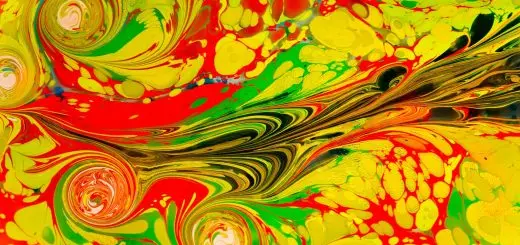The Enchanting Tale of Circe in Greek Myth

Looking for more amazing products? Check out our online store and explore our collection here! Happy shopping!
Before diving in, please note: This post is for informational purposes only. If you’d like to know more about how we approach topics, feel free to check out our friendly Disclaimer Page.
Hey there, amazing readers! 
We’re committed to delivering quality posts, and your support (even just sticking around despite the ads) means everything to us. So, bear with us, and thanks for helping us keep the good vibes rolling. Now, on to the fun stuff!
TRANSLATE BUTTON AT THE END OF THE ARTICLE
A Quick Overview
In the world of Greek mythology, enchanting tales abound, and one character who stands out is Circe.
This captivating sorceress, often portrayed with an air of mystery and allure, weaves a narrative filled with transformation, power, and redemption.
Through her magical exploits on her remote island, she evokes both fear and fascination.
By delving into her story, we can truly appreciate the complexity of her character and the impact she has had on literature and popular culture.
Let’s embark on this journey to explore the enchanting tale of Circe.
Introduction to Circe: The Mysterious Sorceress of Myth
Circe is a figure who embodies the duality of enchantment and menace.
Described as a beautiful woman with unrivaled magical abilities, she captivates those who encounter her.
In the Odyssey, Homer introduces her as a potent sorceress who resides on the island of Aiaia.
She is infamous for her ability to transform men into animals, a spell that brings both admiration and trepidation.
But there’s more to Circe than just her magical prowess; her story explores themes of power, isolation, and ultimately, redemption.
What draws us to Circe is not just her enchanting nature, but also her depth.
She is often depicted as a solitary figure, with her island serving as both sanctuary and prison.
This sense of isolation creates a complex character who grapples with her identity and desires.
The tension between her powers and her loneliness resonates with many of us in our own lives.
Who hasn’t felt like an outsider at times, longing for connection while also wielding a particular strength that sets them apart?
In the grand tapestry of Greek myths, Circe’s tale offers a rich exploration of femininity and autonomy.
She defies the traditional role of women in mythology, stepping into a space where she claims her power.
Her story reveals how strength can be both a blessing and a burden.
As we navigate her narrative, we discover that Circe is more than just a villain; she is a multifaceted character deserving of empathy and understanding.
The Origins of Circe: A Glimpse into Her Parentage
Circe’s lineage plays a vital role in shaping her narrative.
Born to Helios, the sun god, and Perse, an Oceanid nymph, she inherits a remarkable blend of divine and earthly attributes.
This potent heritage is crucial to her identity and powers.
Helios, often associated with light and power, bestows upon her the ability to harness magical forces.
On the other hand, her mother’s connection to the sea introduces themes of fluidity and transformation.
Her family ties do not end there.
Circe is also connected to several well-known figures in mythology, including the mighty sorceress Hecate, her aunt.
Hecate’s influence on Circe is significant, as she represents magic, witchcraft, and the darker aspects of sorcery.
This connection places Circe within a broader context of magical women in Greek mythology, which adds layers to her character.
Circe’s parentage also reflects the complexities of divine relations.
While she possesses immense power, she is often overshadowed by her father and aunt.
This dynamic can make her seem like an outlier, yearning for recognition yet fully capable of wielding her own influence.
This struggle for identity resonates with many of us, as we often grapple with the legacies of our families while crafting our own paths.
Circe’s Island: A Magical Realm of Transformation
Circe’s island, Aiaia, is more than just a backdrop; it serves as a character in its own right.
Picture a lush, mystical land filled with enchanting flora and fauna.
It’s a paradise where nature thrives, but it also harbors darker secrets.
The island’s isolation mirrors Circe’s own solitary existence, enhancing the themes of transformation and confinement.
Aiaia is known for its magical qualities; it’s a place where the lines between reality and fantasy blur.
The island is dotted with herb gardens, which Circe tends to with care.
These herbs are not just plants; they are tools of her trade, each with unique properties that allow her to craft powerful potions.
The landscape itself seems to respond to her moods, lush and vibrant when she feels joy, and darkly foreboding when she is troubled.
Yet, Aiaia also becomes a prison for Circe.
Her powers isolate her, keeping her apart from the world.
The men who arrive on her shores are often unprepared for the challenges they face.
They come seeking adventure but leave transformed, both physically and spiritually.
Aiaia’s magic is a double-edged sword, providing Circe with a certain autonomy while simultaneously trapping her in her own narrative.
This duality of the island reflects the essence of Circe herself.
She is a nurturing figure, providing refuge for those in need, yet a formidable force who instills fear in the hearts of men.
This complexity makes Aiaia a vital part of her story.
The island is both a haven and a prison, just as Circe herself is both a healer and a witch.
The Art of Herbal Magic: Circe’s Knowledge of Nature
Circe is synonymous with magic, particularly through her mastery of herbalism.
Her profound connection to nature allows her to create potions that can heal or harm.
This intricate relationship with the natural world is a key aspect of her character.
She is not just a sorceress; she is a skilled botanist, wise in the ways of plants.
Each herb in Circe’s garden tells a story.
Some bring life, while others bring death.
For instance, she is famous for using the herb "moly," which Hermes provides to Odysseus as a protection against her spells.
This highlights Circe’s knowledge and the potential dangers she poses.
She is a woman who understands the interplay between nature and magic, where each root and leaf holds a secret.
Herbalism is not merely about wielding power; it’s also about connection.
Circe listens to the earth, learns its rhythms, and respects its wisdom.
This reverence for nature adds depth to her character.
She is a figure who embodies the nurturing aspects of femininity, connecting her magic to the cycles of life and death.
This connection to herbal magic also represents the age-old wisdom passed down through generations of women.
Circe stands as a symbol of autonomy and strength in a world often dominated by male figures.
Just as she transforms those who cross her path, she also reclaims her narrative, embracing the power of nature.
The Arrival of Odysseus: A Fateful Encounter
The arrival of Odysseus on Aiaia marks a pivotal moment in Circe’s story.
After years of wandering and battling adversities, he and his crew land on her shores, unwittingly stepping into her world of enchantment and danger.
Odysseus, known for his cunning and bravery, finds himself confronted by a force he did not expect: a woman with the power to transform him.
Initially, Circe ensnares Odysseus’s men, turning them into swine.
The transformation is not just physical; it symbolizes the loss of humanity when faced with temptation and excess.
This act stirs a whirlwind of emotions within Circe.
She is both fascinated and frustrated by Odysseus, a man who refuses to be subdued by her magic.
When Odysseus confronts Circe, it is a clash of wills.
Armed with the protection of Hermes, he stands firm against her spells.
This encounter shifts the dynamic between them.
Instead of simply a victim and a villain, they become two equal forces in a complex dance of power and attraction.
Odysseus’s resilience intrigues Circe, igniting a spark of change within her.
As their relationship develops, Circe reveals her vulnerability.
Beneath her fierce exterior lies a longing for connection.
Odysseus, in turn, sees beyond her magic to the woman beneath.
This mutual recognition becomes a turning point for Circe, who begins to reconsider her identity and purpose.
Their fateful encounter is a beautifully tangled web of desire, power, and transformation.
It challenges both characters to confront their fears and desires, leading to a profound evolution of their identities.
In many ways, this moment serves as the catalyst for Circe’s journey toward self-discovery.
The Transformation of Men: Circe’s Bewitching Power
Circe’s ability to transform men into animals is one of her most iconic powers.
But what does this transformation symbolize?
At its core, it represents the consequences of unchecked desires and the fragility of human identity.
When men are turned into beasts, they lose their humanity, becoming prisoners of their own vices.
The story of Circe serves as a cautionary tale about the dangers of hubris.
Her victims, often overconfident sailors, underestimate her powers.
They arrive on Aiaia without respect for her magic, believing they can handle whatever comes their way.
Their transformations act as a reflection of their own shortcomings; they are reduced to their base instincts, stripped of the traits that make them human.
This motif resonates deeply with contemporary audiences.
It poses questions about identity and the choices we make.
Are we defined by our actions?
What happens when we succumb to our darker impulses?
Circe, with her bewitching power, acts as a mirror for these questions.
She compels her victims to confront the parts of themselves they would rather ignore.
However, Circe’s transformations are not entirely devoid of compassion.
Her actions often stem from a desire to protect herself.
Each spell she casts serves as a reminder of her power and her pain.
She embodies the complexities of femininity, where strength can be both a weapon and a shield.
The transformations are also a form of rebirth.
They allow Circe to reclaim her narrative and reshape her destiny.
By turning men into animals, she asserts her agency in a world that seeks to define her.
In this sense, her magic becomes a tool of empowerment, where she refuses to be a mere object of desire.
A Lesson in Hospitality: Circe’s Treatment of Odysseus
Circe’s relationship with Odysseus unfolds like a tale of hospitality interwoven with magical intrigue.
When he arrives on her island, she initially casts a spell, transforming his crew into pigs.
Yet, her treatment of Odysseus diverges from that of his men.
Instead of punishment, she offers him a different kind of hospitality—a blend of danger and allure.
After confronting her, Odysseus gains her respect.
Rather than merely a victim, he becomes an equal partner in their interaction.
This shift in dynamics illustrates Circe’s capacity for change.
She invites him to her home, providing food and shelter.
This act of hospitality is layered; it reflects her desire for connection while also being deeply rooted in her own fears and insecurities.
Circe’s invitation to Odysseus is both a welcome and a challenge.
She offers him a taste of her world, filled with magic and power.
It’s a space where he must navigate the complexities of her character.
This sets the stage for deeper intimacy, allowing both characters to reveal their vulnerabilities.
The hospitality she extends is not superficial; it reveals her longing for companionship.
Circe, often depicted as a solitary figure, yearns for understanding.
Her relationship with Odysseus serves as a turning point, where she begins to see the potential for connection beyond mere magic.
In Greek culture, hospitality is a sacred duty.
Circe’s actions embody this notion, yet they also raise questions about the nature of hospitality itself.
Is it genuine if it is laced with manipulation?
As we explore this dynamic, we see how hospitality can become a means of control and connection, reflecting the complexities of human relationships.
Through this lens, we can appreciate Circe’s character as she grapples with her own identity.
Her interactions with Odysseus highlight the interplay of power, desire, and vulnerability.
This nuanced portrayal offers a refreshing perspective on an ancient myth, reminding us that even the most powerful figures can crave connection and understanding.
The Role of Hermes: Guiding Odysseus Through Chaos
In the chaos of Circe’s world, Hermes stands as a guiding light for Odysseus.
As the messenger god, he offers wisdom and protection, helping Odysseus navigate the treacherous waters of enchantment.
Hermes is more than a mere side character; he plays a crucial role in the transformation of both Circe and Odysseus.
When Hermes first appears, he provides Odysseus with the herb "moly," a gift that protects him from Circe’s spells.
This intervention underscores the importance of divine guidance in the human experience.
Hermes acts as a bridge, connecting Odysseus to the wisdom of the gods while also highlighting the delicate balance of power in their interactions.
Hermes does not simply serve as a protector; he also embodies the spirit of cunning and adaptability.
His cleverness mirrors Odysseus’s own traits, creating a synergy that allows them to confront Circe’s magic.
Together, they navigate the complexities of her enchantment, revealing the interplay between divine intervention and human agency.
The relationship between Hermes and Circe adds another layer to the story.
As a god associated with trickery, Hermes understands the nuances of transformations better than anyone.
He recognizes Circe’s loneliness and the complexities of her power, making him a sympathetic figure in her narrative.
His presence prompts Circe to reflect on her choices, forcing her to confront the impact of her actions on others.
Through Hermes, we see the broader themes of fate and free will at play.
While Odysseus has the strength to confront Circe, it is Hermes who offers him the tools to do so.
This collaboration highlights the need for support in our own journeys.
We often find ourselves in need of guidance, and sometimes, it comes from the most unexpected places.
The role of Hermes enriches our understanding of the myth, showcasing how divine forces can influence human destinies.
His intervention is a reminder that we are not alone in our struggles.
Even the mightiest heroes benefit from the wisdom of others, emphasizing the importance of community and collaboration.
Circe’s Redemption: A Journey from Villain to Ally
Circe’s character arc is a captivating tale of transformation and redemption.
Initially portrayed as a fearsome sorceress, her relationship with Odysseus allows her to shed the skin of villainy.
As they connect on a deeper level, Circe confronts her own fears and desires, leading to a profound shift in her identity.
This journey of redemption is not without its challenges.
Circe grapples with her past actions and the consequences of her magic.
The transformation of Odysseus’s men weighs heavily on her conscience, forcing her to reconsider her place in the world.
She begins to see herself not just as a powerful witch, but as a woman capable of love and compassion.
Odysseus, in many ways, serves as a catalyst for Circe’s redemption.
Through their interactions, she discovers the potential for intimacy and understanding.
He sees her not just as a sorceress, but as a complex individual with her own struggles.
This recognition allows Circe to embrace her vulnerabilities and redefine her identity.
As the narrative unfolds, Circe transitions from a figure of isolation to one of connection.
She becomes an ally to Odysseus, offering guidance and support on his journey.
This shift signifies a broader theme of empowerment; Circe reclaims her narrative, finding strength in collaboration rather than fear.
The journey from villainy to redemption resonates with many of us.
We all have moments in our lives where we grapple with our choices and seek a path toward healing.
Circe’s story reminds us that redemption is possible, even for those who have strayed.
It is a testament to the power of love and understanding in transforming our lives.
Ultimately, Circe’s character arc transforms her from a mere mythological figure to a relatable symbol of resilience and growth.
Her journey encourages us to embrace our complexities and find our own paths toward redemption.
The Impact of Circe on Literature and Pop Culture
Circe’s story has had a lasting impact on literature and pop culture, transcending the boundaries of time and space.
Her character has inspired countless writers, artists, and filmmakers who seek to explore themes of magic, transformation, and femininity.
From ancient texts to modern adaptations, Circe remains a compelling figure who captures our collective imagination.
In literature, Circe appears not only in the Odyssey but also in various retellings and adaptations.
Authors have sought to delve deeper into her character, offering new perspectives and interpretations.
Her story embodies the struggles of women navigating a male-dominated world, making her a symbol of empowerment and resilience.
In contemporary culture, Circe has found a new audience through novels, plays, and films.
Madeline Miller’s bestselling novel "Circe" reimagines her story, providing readers with insight into her life, struggles, and desires.
This modern retelling emphasizes her complexity, showcasing how she defies the traditional narrative of villainy.
Moreover, Circe’s influence extends beyond literature.
She has inspired visual artists, musicians, and performers who seek to capture her essence.
Whether through paintings or theatrical interpretations, her character continues to resonate, symbolizing the timeless struggle for autonomy and empowerment.
The themes present in Circe’s story are as relevant today as they were in ancient Greece.
Her journey explores the complexities of identity, power dynamics, and the search for connection.
This universality ensures that her tale will continue to inspire and captivate future generations.
Circe serves as a reminder that our stories matter.
They shape our understanding of ourselves and the world around us.
As we engage with her narrative, we not only honor her legacy but also reflect on our own journeys of transformation and growth.
Circe in Modern Adaptations: Reimagining Her Tale
Modern adaptations of Circe’s tale often emphasize her complexity and depth, challenging the traditional portrayal of her as merely a villain.
Various artists and writers have sought to humanize her character, inviting audiences to empathize with her struggles.
This reimagining allows us to explore the nuances of her identity and the societal expectations placed upon her.
In recent adaptations, Circe is frequently depicted as a feminist icon.
Her journey reflects the challenges women face in a patriarchal world, making her a relatable figure for contemporary audiences.
She embodies the fight for autonomy and self-discovery, encouraging women to reclaim their narratives.
Television and film adaptations have also sought to breathe new life into Circe’s story.
By exploring her motivations and desires, these interpretations delve into her psychological landscape.
This shift expands our understanding of her character, revealing the layers of pain, loneliness, and longing that define her existence.
The allure of Circe lies not only in her magical abilities but also in her vulnerability.
Modern adaptations highlight her struggles with identity, love, and loss, creating a more relatable figure.
By focusing on her emotional journey, artists invite audiences to connect with her on a personal level.
Moreover, these adaptations often challenge the notion of good versus evil.
Circe is portrayed as a complex character who grapples with her choices and their consequences.
This moral ambiguity resonates with audiences, prompting discussions about the nature of power and the complexities of human relationships.
The reimagining of Circe’s tale reflects a broader cultural shift toward embracing diverse narratives.
As society grapples with issues of identity and empowerment, Circe becomes a symbol of resilience and strength.
Her story invites us to explore our own complexities, celebrating the richness of human experience.
Conclusion: The Enduring Legacy of Circe’s Enchantment
Circe’s enchanting tale continues to captivate and inspire us, transcending the boundaries of time and culture.
She embodies the complexities of femininity, power, and the quest for connection in a world that can often feel isolating.
Through her story, we explore the themes of transformation and redemption, reminding us of the strength that lies within vulnerability.
From ancient myths to modern adaptations, Circe’s legacy endures.
Her character challenges us to confront our own struggles and embrace our complexities.
In a society that often seeks to define us, Circe stands as a testament to the power of self-discovery and the importance of reclaiming our narratives.
As we reflect on Circe’s story, we find that it resonates with our own experiences.
We all have moments of transformation, where we must navigate the delicate balance of power and vulnerability.
Circe reminds us that even the most powerful figures can seek connection and understanding.
Ultimately, her tale invites us to celebrate the richness of human experience.
In a world filled with challenges and uncertainties, Circe’s enchantment serves as a beacon of hope and resilience.
Her journey inspires us to embrace our own paths, encouraging us to find our strength in the face of adversity.

The Enlightenment Journey is a remarkable collection of writings authored by a distinguished group of experts in the fields of spirituality, new age, and esoteric knowledge.
This anthology features a diverse assembly of well-experienced authors who bring their profound insights and credible perspectives to the forefront.
Each contributor possesses a wealth of knowledge and wisdom, making them authorities in their respective domains.
Together, they offer readers a transformative journey into the realms of spiritual growth, self-discovery, and esoteric enlightenment.
The Enlightenment Journey is a testament to the collective expertise of these luminaries, providing readers with a rich tapestry of ideas and information to illuminate their spiritual path.
Our Diverse Expertise
While our primary focus is on spirituality and esotericism, we are equally passionate about exploring a wide range of other topics and niches 

To ensure we provide the most accurate and valuable insights, we collaborate with trusted experts in their respective domains 
Our blog originally focused on spirituality and metaphysics, but we’ve since expanded to cover a wide range of niches. Don’t worry—we continue to publish a lot of articles on spirituality! Frequently visit our blog to explore our diverse content and stay tuned for more insightful reads.
Hey there, amazing reader! 
Check out our store here and take a peek at some of our featured products below! Thanks for being awesome!












